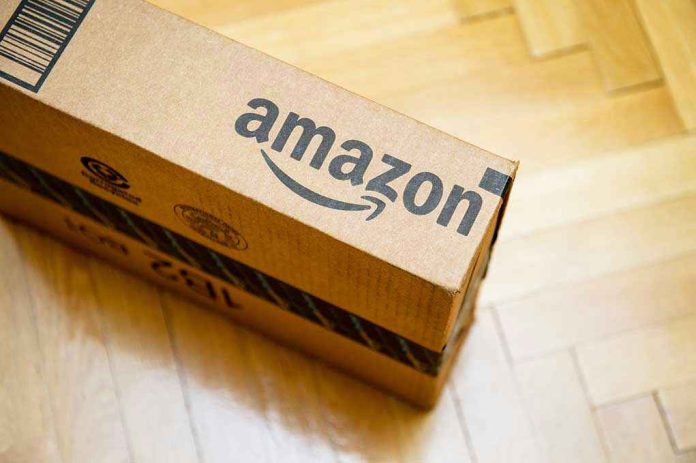
Amazon’s latest move to stretch Prime Day into a full-blown 96-hour marathon is about to juice U.S. online spending to a jaw-dropping $23.8 billion – and you have to wonder, is this “shopping holiday” a celebration of capitalism or just another prime example of unchecked corporate excess?
At a Glance
- Amazon’s Prime Day 2025 will span four days, with U.S. online sales projected to hit $23.8 billion.
- The event’s expansion is fueling a retail arms race, with Walmart, Target, and others rolling out their own competing mega-sales.
- Analysts forecast double-digit year-over-year growth, but concerns over profit margins and small business survival are mounting.
- Consumers plan to spend more than ever, but critics warn of overspending and retail “event fatigue.”
Amazon Prime Day’s 96-Hour Frenzy: Retail Capitalism or Runaway Circus?
Amazon, the undisputed king of online retail, has weaponized Prime Day into what can only be described as a four-day shopping siege – and the numbers tell the story. Adobe Analytics is projecting that Americans will shell out a record $23.8 billion during the 96-hour Prime Day event. That’s not just a big number; it’s a flashing neon sign of how deeply corporate sales spectacles have embedded themselves into the American consumer psyche. What started as a one-day celebration of Amazon’s 20th birthday is now a retail juggernaut rivaling Black Friday, Cyber Monday, and maybe even the Super Bowl for sheer spectacle. The days of hunting for bargains in brick-and-mortar stores are fading fast; now, it’s all about who can click the fastest, spend the most, and boast the best deals on social media.
The 2025 Prime Day expansion is no accident. It’s a deliberate move by Amazon to grab even more market share, outflank competitors, and wring every last dollar out of consumers who, let’s face it, are all too eager to play along. Meanwhile, Walmart, Target, and every other big-box retailer with a website have jumped into the fray, offering their own “can’t-miss” sales, hoping to catch the overflow from Amazon’s marketing tsunami. The result? A retail arms race that leaves smaller businesses gasping for air and raises questions about how much bigger – and more over the top – these so-called “events” can get before the whole thing collapses under its own weight.
Big Numbers, Big Winners – and Big Losers
Let’s talk about the supposed winners and losers in this retail bonanza. Sure, Amazon’s shareholders are smiling, and the big payment processors are licking their chops at the surge in transaction volume. But beneath the surface, there’s a different story. Small businesses, who once saw Prime Day as a golden ticket, are now squeezed by relentless discount demands and astronomical advertising fees. Retail strategists admit that, while the top-line numbers look impressive, profit margins for sellers are getting thinner by the year. The pressure to keep up with Amazon’s relentless pace is forcing many to slash prices to the bone, raising serious questions about sustainability and long-term survival for anyone who isn’t a Fortune 500 giant.
And don’t forget the logistics workers. The four-day Prime Day marathon turns warehouses and delivery networks into pressure cookers. As the packages pile up and the deadlines tighten, the risk of burnout, labor disputes, and fulfillment disasters grows. It’s the kind of operational stress that only benefits those at the very top, while the rank-and-file grind through yet another “record-breaking” quarter. So, while the retail sector pats itself on the back for another year of double-digit sales growth, maybe it’s time to ask: Who’s really winning here, and at what cost?
Consumers Caught in the Crossfire: Deals, Debt, and Digital Overload
Consumers love a deal – that’s a fact as American as apple pie. And Prime Day is serving up deals by the truckload, with surveys showing the average shopper plans to spend $242 on Amazon and another $188 on competing sites. But here’s the catch: All this “savings” talk masks a deeper problem. Retail events like Prime Day are engineered to trigger FOMO and impulse buying, leading many to overspend on stuff they didn’t even know they needed. The endless sales cycles are creating retail “event fatigue,” where no one buys at full price anymore because there’s always another sale just around the corner.
There’s also the uncomfortable reality that this retail spectacle widens the gap between the digital haves and have-nots. For families without reliable internet or credit, these deals might as well not exist. And as Amazon and its competitors normalize these mega-events, expectations for discounts grow – along with consumer debt and the nagging sense that the game is rigged to keep everyone spending, no matter the economic climate or inflationary pressures.
The Bigger Picture: What’s Next for American Retail?
Amazon’s 96-hour Prime Day is the latest chapter in the endless expansion of the American retail calendar. Other retailers are already plotting how to stretch their own sales extravaganzas, blurring the lines between traditional shopping seasons and these relentless digital blowouts. Industry analysts are predicting 14% year-over-year growth for Prime Day 2025, but they’re also warning that margins are shrinking as discounting intensifies and fulfillment costs skyrocket.
This isn’t just about shopping. It’s about the transformation of American consumer culture, where convenience and instant gratification trump all else. The question is, how long can this arms race continue before consumers, small businesses, and even the big players themselves hit a wall? Maybe it’s time for a little less hype, a little more common sense, and a reminder that capitalism works best when the playing field isn’t tilted so far in favor of the giants. Until then, grab your credit card and enjoy the spectacle – just don’t be surprised if you wake up with a shopping hangover and wonder what, exactly, you were celebrating.
Sources:
Momentum Commerce Prime Day 2025 Growth Prediction
RTE News: Amazon Prime Day set to lift US online sales to $23.8bn
Statista: U.S. Amazon Prime Day spending intentions 2025





